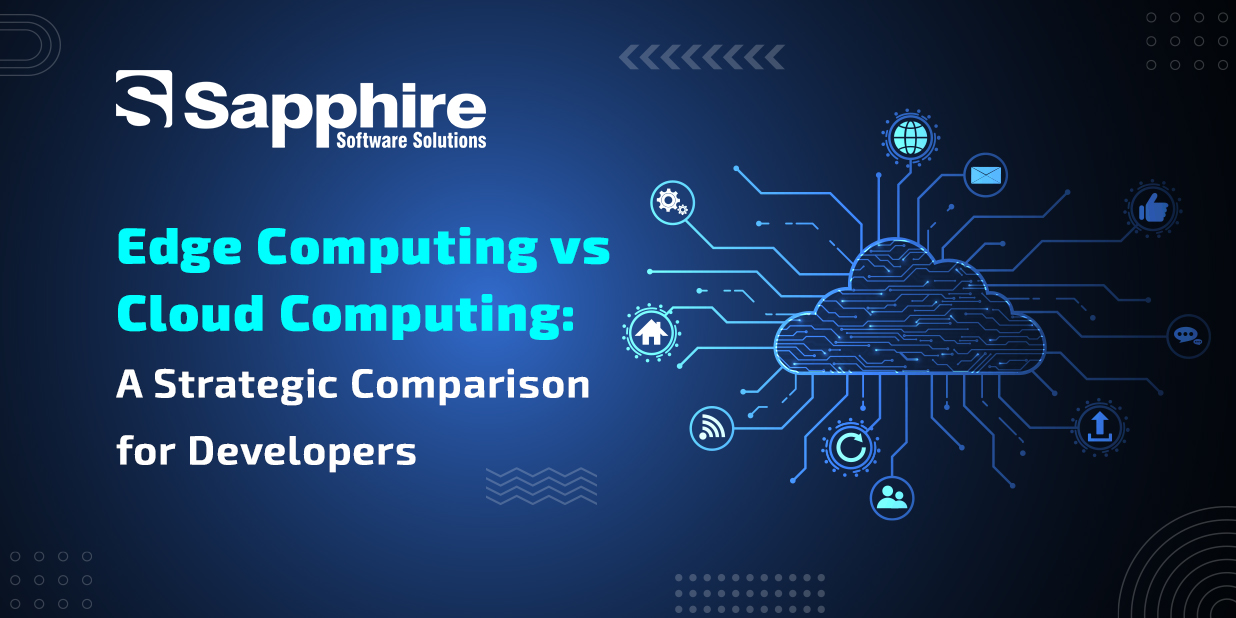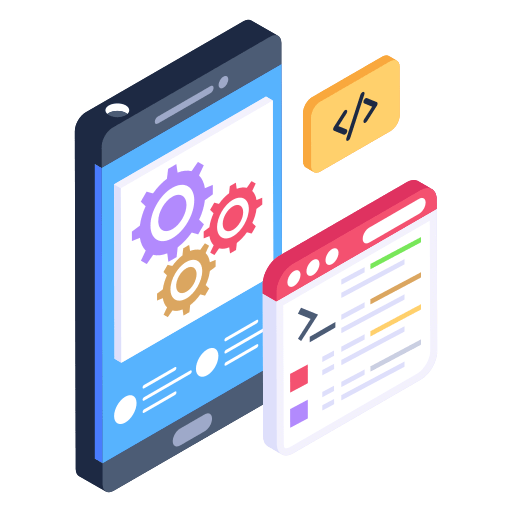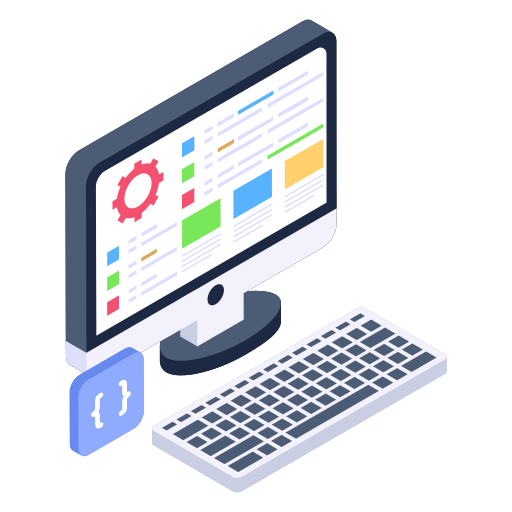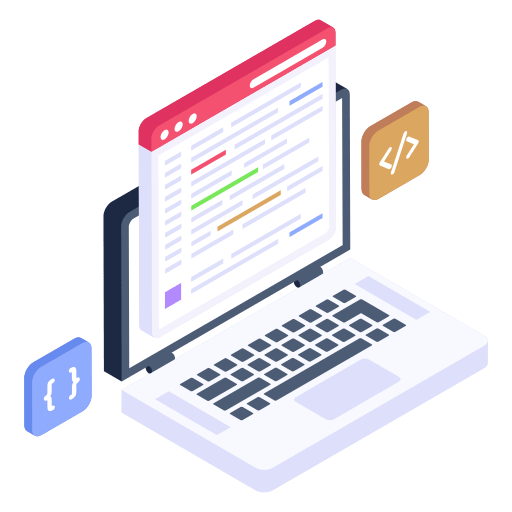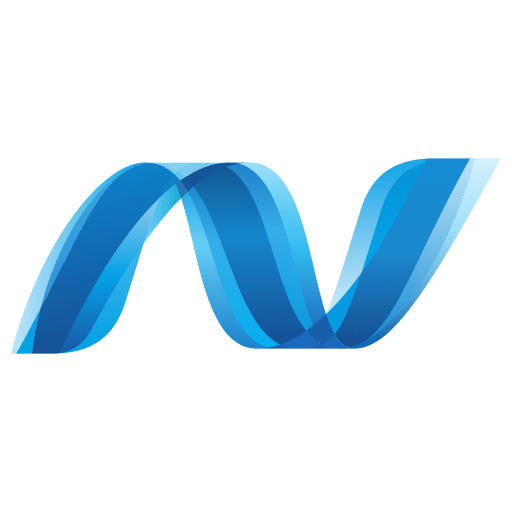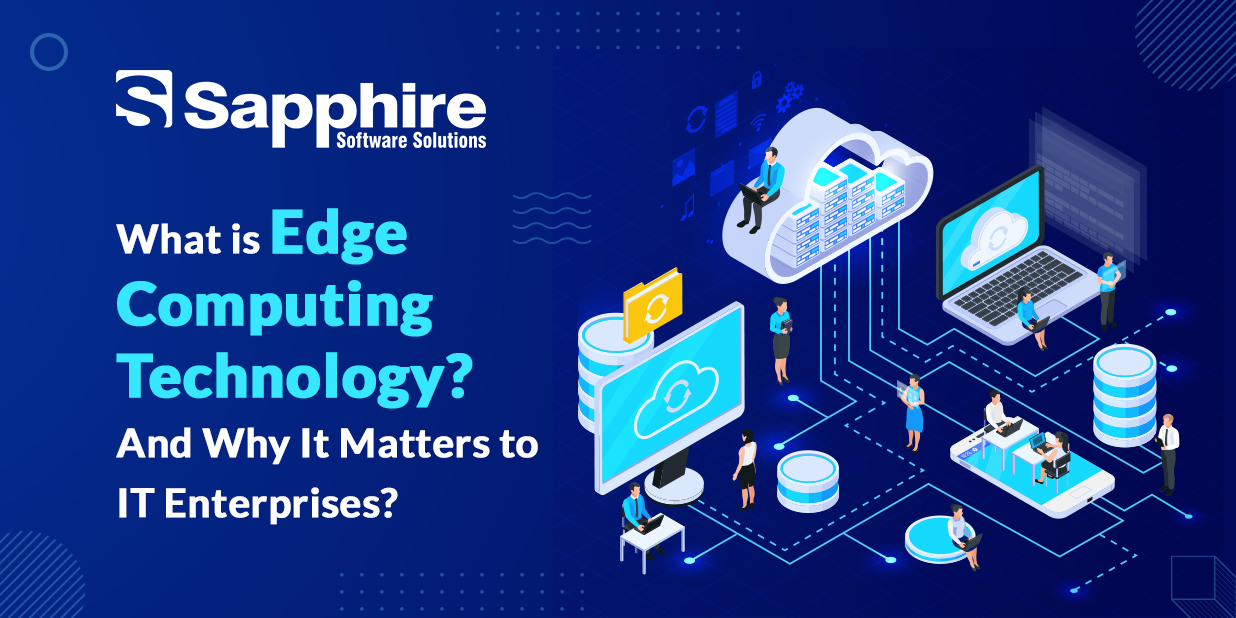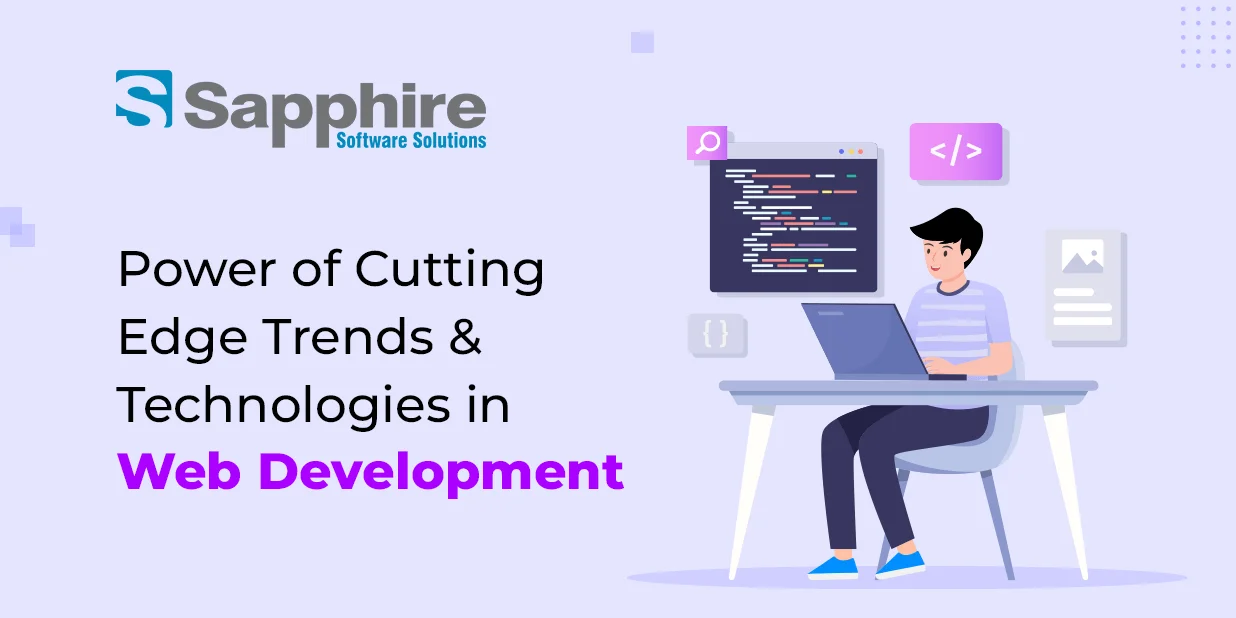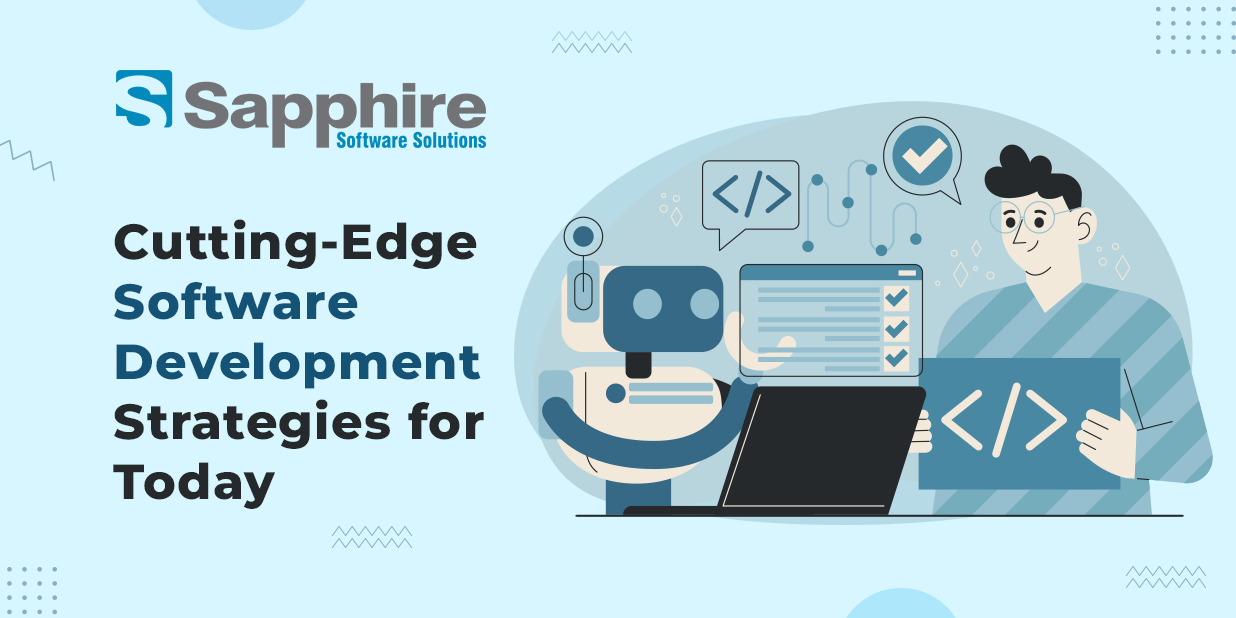I still remember the blank stares I received from my team five years ago when I first suggested we needed to move some of our processing to the edge. “But we just finished migrating everything to the cloud,” my lead developer protested. She wasn’t wrong, we had spent 18 months painstakingly refactoring our architecture to leverage cloud-native services. But as our IoT sensors multiplied and latency became increasingly problematic, I knew we needed something different. The edge computing vs cloud computing tension is no longer an abstract argument; it’s a real-world problem that developers struggle with every day. Through my experience working with dozens of clients, I’ve come to understand that knowing the strengths and weaknesses of each strategy is essential for creating robust, responsive systems.
This strategic comparison aims to cut through the marketing hype and provide developers with practical insights for making architectural decisions. The relationship between edge computing and cloud computing is nuanced and complementary, not the winner-takes-all battle that some industry publications might suggest. Since counselling Fortune 500 firms on distributed computing approaches over a decade ago, I have discovered that excellence is not frequently the result of selecting a solitary paradigm.
Let’s delve deeper into these computing models to enable you to plot the best course of action for your next endeavor.
What Is Edge Computing?
Edge computing locates computation and data storage closer to where it’s required, cutting the distance data must travel and allowing for real-time processing. Instead of forwarding all data to centralised cloud data centres, edge computing processes information locally on a device or nearby at an edge server. My engagement with a significant manufacturing customer found that their quality control process was buried under too much data. High-definition cameras were taking pictures of products every 500 milliseconds at 4K resolution, drowning their cloud bandwidth. Reducing data transmission by 95% but increasing response rates through the utilization of edge compute solutions on the shop floor was possible. Cameras now pre-process images and send only errors and summed stats to the cloud.
Imagine edge computing as putting mini data centres nearer to where the data is being created. Whether that’s a self-driving car making split-second decisions while driving or a connected factory optimizing the manufacturing process in real-time, edge computing reduces latency by positioning compute resources geographically near where they’re required.
The growth in the edge computing market has been phenomenal. As per latest industry reports, the market is growing at a CAGR of close to 38% and is expected to touch $155.9 billion by 2030. The growth is being fueled by applications that cannot afford the latency of pushing data to remote data centres.
As a developer who has deployed edge solutions in multiple industries, I’ve seen directly how edge computing for IoT is revolutionizing how we design connected systems. The devices that used to be data collectors are now smart nodes that make decisions autonomously and cooperate to build fault-tolerant networks.
What Is Cloud Computing?
Cloud computing provides computer services such as servers, storage, databases, networking, software, and analytics over the internet. This platform provides scalable resources and economies of scale that would be hard to attain with on-premises infrastructure.
I remember working with a healthcare startup that required analyzing enormous genomic data sets. They first contemplated buying high-performance computing hardware, but the up-front capital would have consumed their runway. Leveraging specialized cloud computing capabilities, they were able to crunch petabytes of genomic data in a pay-as-you-go arrangement and cut their infrastructure costs by 78% while speeding up their time to insight.
The flexibility of cloud resources is what gives this model such strength. In my experience with an e-commerce site, we built their infrastructure to scale up automatically during holiday seasons and scale down during slower times, something that would have been far too costly with on-premises hardware. Cloud service providers continue to add more offerings beyond core infrastructure. Cloud platforms today feature advanced AI capabilities, serverless computing environments, and industry-specific solutions for nearly every sector.
The history of cloud computing market trends reflects a transition from basic infrastructure offers to end-to-end platforms that abstract away infrastructure worries completely. The market is projected to reach $1.55 trillion by 2030 as companies increasingly go for cloud-native solutions for their technology requirements.
Cloud computing for IoT created the preconditions for the connected device era. By supplying the backend infrastructure to consume, store, and process the enormous streams of data being generated by billions of IoT devices, cloud platforms made the initial smart solutions generation possible. Yet, as IoT deployments have evolved, shortcomings in this centralised method have emerged, especially for solutions needing real-time responsiveness.
What is the difference between the edge and the cloud?
The edge computing vs cloud computing difference begins with their inherently different architectures. Whereas cloud computing concentrates resources in enormous data centres, edge computing spreads processing power across a network of devices and local servers.
I saw this difference firsthand while assisting a smart city project optimize their traffic management system. Their cloud solution was gathering intersection data but responding at 1-2 seconds—much too slow for real-time optimization of traffic light timing. With the placement of edge computing nodes at strategic intersections, response times decreased to less than 50 milliseconds, enabling dynamic optimization based on real traffic conditions.
The most important differences I highlight while advising on edge vs cloud computing designs are:
- Latency: Edge provides millisecond response times; cloud generally functions in hundreds of milliseconds to seconds
- Connectivity Requirements: Edge can operate with network outages; cloud demands continuous connectivity
- Processing Capacity: Edge provides limited local processing capacity; cloud provides near-unlimited scalability
- Data Sovereignty: Edge keeps sensitive data local; cloud centralizes data (frequently crossing jurisdictional borders)
- Cost Structure: Edge tends to need capital investment for equipment; cloud exists mainly as an operating expense
In a recent infrastructure planning meeting with a multinational bank, the security team expressed concerns over handling customer financial information in public clouds because of regional regulations. The solution we came up with utilized edge computing security practices to handle sensitive transactions locally within country borders, while still utilizing cloud resources for non-regulated workloads. This hybrid solution met both regulatory needs and performance requirements.
The relationship between edge computing and cloud computing is ever more symbiotic instead of competitive. In all of the advanced systems I’ve assisted in designing, both paradigms operate together, with edge doing real-time processing and cloud taking care of longer-term analytics, model training, and data storage.
What Role Does Cloud Computing Play in Edge AI?
The advent of Edge Cloud Computing, a blended model that incorporates aspects of both paradigms, is one of the most important architectural developments I’ve seen during my career. This model utilizes edge devices for real-time processing while still having an uninterrupted link to cloud resources for more intricate operations.
For a recent smart retail installation, we deployed computer vision systems that had to identify customers and customer behavior in real-time. This edge cloud computing setup offered instantaneous responsiveness while still leveraging the computational muscle of the cloud.
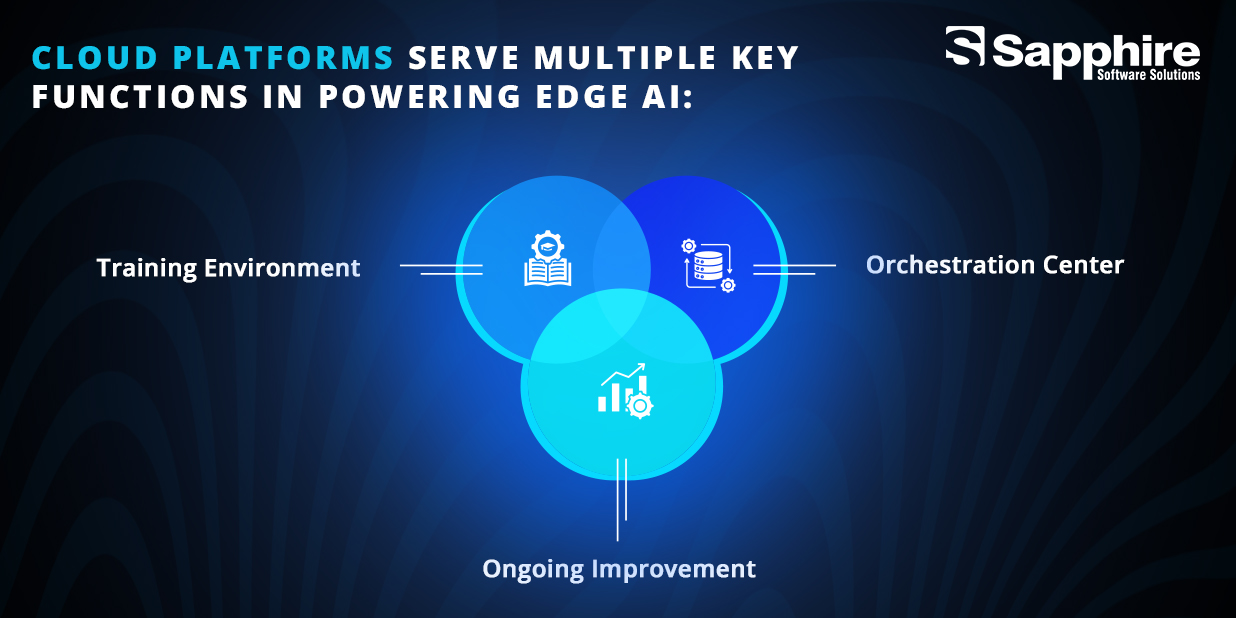
Cloud platforms serve multiple key functions in powering edge AI:
- Training Environment: The vast processing capacity in cloud environments is best suited to train sophisticated AI models to be later implemented on edge devices.
- Orchestration Center: Cloud infrastructure controls the deployment, monitoring, and maintenance of AI models on dispersed edge networks.
- Ongoing Improvement: Cumulative data from edge devices is processed in the cloud to enhance AI models, which are redeployed at the edge
When working with an agricultural technology firm, we created a system where autonomous tractors employed edge computing within IoT to make real-time decisions regarding planting and fertilization using soil sensors. The tractors worked autonomously even in regions with limited connectivity but synchronized with cloud computing services whenever there were connections to download updated AI models trained on data from thousands of fields under various climates and soil types. The convergence of cloud and edge in AI solutions generates a cycle of improvement that neither approach could produce alone.
Will edge computing replace cloud computing?
The question of whether edge computing will replace cloud computing is one of the most frequent myths I come across when consulting with technology CEOs. The situation is much more complicated than the zero-sum competition that some commentators on the industry propose. When one of our manufacturing customers asked if they should “be moving from cloud to edge,” my reply was that they were asking the wrong question. In our next series of architecture meetings, we sketched out their workloads across what I refer to as the “processing continuum”—from highly embedded edge devices to regional edge data centers to hyperscale clouds—according to latency needs, data gravity, and business importance.
Just as edge computing versus quantum computing is a misleading comparison between technologies that solve essentially distinct problems, edge versus cloud is an artificial binary. In the hundreds of distributed systems I’ve assisted in designing, the best architectures make use of multiple tiers of processing, putting computation where it’s most sensible. The interaction between edge computing and cloud computing is shifting towards closer integration instead of displacement. Edge is expanding the reach of the cloud instead of replacing it. Cloud providers themselves acknowledge this, with all leading platforms now supporting dedicated edge deployment modes and hybrid designs.
For one of our recent smart city projects, we used edge nodes for real-time traffic monitoring and emergency response, but used the same nodes to access cloud resources for analyzing historical patterns and predictive modeling. The edge didn’t displace the cloud—it brought its power to bear in situations where cloud alone would have been inadequate. The features that make cloud computing worthwhile—practically unlimited scale, specialized hardware access, and ecosystem integration—are just as attractive with the growth of edge deployments.
Edge Computing vs Cloud Computing:
Edge Computing Use Cases:
Edge computing use cases commonly include applications involving:
- Extremely low latency responses
- Functioning in connectivity-constrained environments
- Real-time processing of big data streams
- On-site data processing for privacy or regulatory reasons
- Lower bandwidth usage
Operating with an offshore oil rig, we used edge computing solutions to track equipment health and identify potential failures. With satellite connectivity that was expensive at thousands per gigabyte, uploading all sensor data to cloud platforms was economically infeasible. Edge processing minimized data transmission by 97%, uploading only actionable information while still allowing predictive maintenance.
Edge computing in IoT has transformed applications such as:
- Self-driving cars compute sensor readings locally to respond to driving in real-time
- Medical instruments track patient vital signs and trigger emergencies independently of the cloud
- Smart production facilities are maximising production lines in real-time according to immediate conditions
- Internet-of-Things retail stores are personalizing customer experiences instantaneously through direct recognition
- Utility grid infrastructure systems react immediately to balance demand and supply
The security advantages of edge computing were essential for a healthcare customer rolling out monitoring equipment in patient homes. By processing sensitive health information locally and transmitting only anonymized insights to the cloud, they were able to remain HIPAA compliant while still gaining population-level insights.
Cloud Computing Use Cases:
Cloud computing use cases shine where:
- Huge computational resources are required
- Workloads have irregular or highly variable demand
- Global accessibility is necessary
- Long-term storage and analysis of data are required
- Distributed team collaboration is required
For one of our genomics research projects, we used specialized cloud computing capabilities to process thousands of genomic sequences—a process that would have taken months on available on-premises hardware but took days using parallel processing in the cloud.
Cloud computing in IoT enables the foundation for applications like:
- Smart home systems are combining data from millions of homes to uncover trends
- Farming systems examining seasonal trends in various geographies and climates
- Supply chain visibility technologies monitor products through global logistics networks
- Environmental monitoring networks are detecting long-term trends across large geographic regions
- Healthcare platforms are uncovering population health trends by examining anonymized patient information
Cloud computing security has evolved in sophistication, and advanced protections difficult to deploy on-site are now provided. For one financial services client, cloud vendors’ expert security services and compliance validations allowed them to surpass their prior on-site security stance with a smaller-sized security operations staff.
How to Choose the Right Cloud Computing Services Provider for Your Business?
Choosing the appropriate cloud computing services provider has grown more complicated as the market has evolved beyond simplistic infrastructure products. Having walked dozens of organizations through this process, I’ve created a disciplined methodology that goes beyond technical attributes.
My strategy begins by laying out your individual use cases against provider specialisations. When collaborating with a media firm, we discovered that one provider was stronger at content delivery and stream services, so they were the obvious pick, even though another provider had slightly lower base infrastructure pricing.
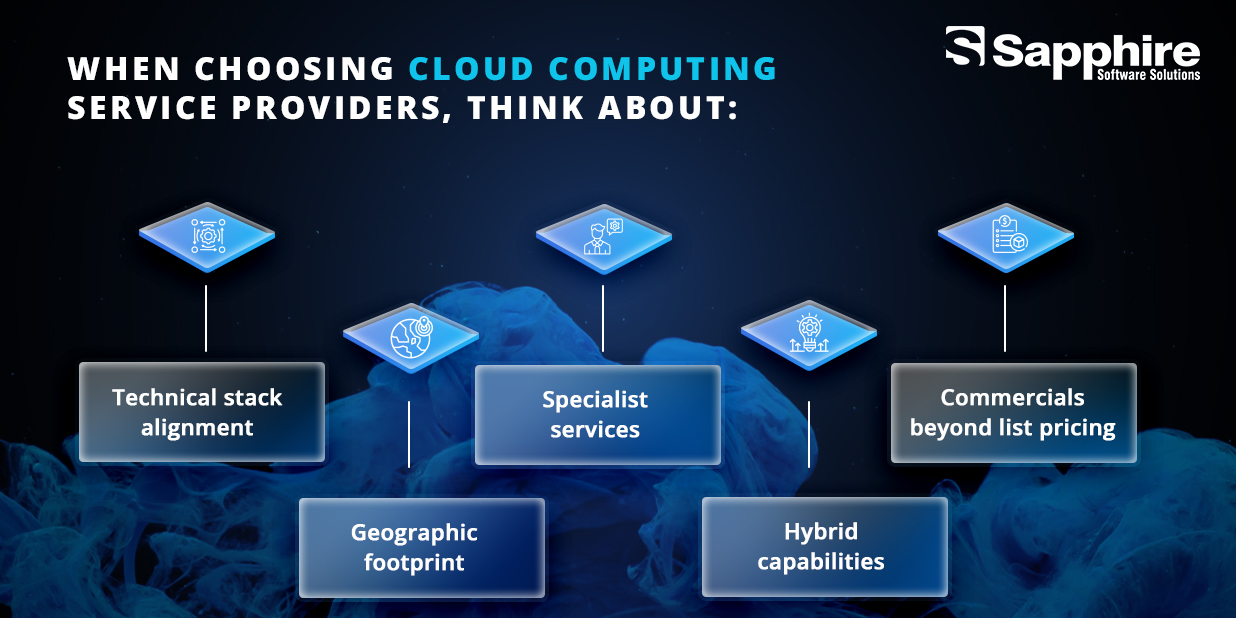
When choosing cloud computing service providers, think about:
- Technical stack alignment: Which provider is most supportive of your current techs and favored development methodologies?
- Geographic footprint: Do they have areas that correspond to your user geography and regulatory needs?
- Specialist services: Which carrier provides the most native services for your exact industry requirements?
- Hybrid capabilities: To what extent do they facilitate integration with your current on-premises or edge computing assets?
- Commercials beyond list pricing: What enterprise discounts, committed use discounts, or migration credits exist?
For organizations that deploy edge cloud computing structures, evaluation criteria extend to encompass:
- Options for edge integration and local hardware support
- Capabilities of data synchronisation between the cloud and the edge
- Unified security models within distributed environments
- Deployment and management tools across hybrid infrastructures
In a recent provider procurement for a retail customer, we designed a weighted decision matrix with a specific focus on edge computing services integration. Although the client was initially concentrating on conventional cloud metrics such as virtual machine cost, our findings showed that the provider with the most robust edge features would lower their total cost of ownership by 23% within three years by facilitating more efficient workload distribution.
Your chosen cloud provider and edge computing strategy are now an essential consideration. Major providers now all provide targeted edge deployment options that take their cloud capabilities into on-premises or field locations, providing a more unified development experience across the computing continuum.



















